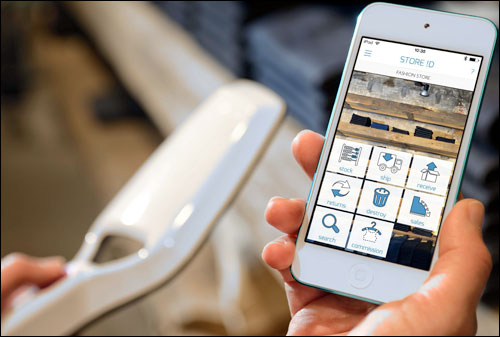As a growing number of goods are sold from online stores, retailers that offer both online and in-store sales face a unique challenge in tracking the flow of inventory through brick-and-mortar and online channels, as well as ensuring that products sold online are actually in stock, and have not already been sold to shoppers at a physical store. Coccinelle, which operates six children’s clothing shops in the Netherlands, is employing radio frequency identification to improve inventory accuracy at its distribution center and stores, in order to ensure that goods ordered online are, in fact, available, enabling the retailer to avoid having to cancel those transactions. Since the EPC ultrahigh-frequency (UHF) RFID system was deployed, the company reports, online sales cancellations have dropped by 60 percent.
The solution, provided by Dutch technology solutions company Nedap Retail, consists of RFID readers installed at the store’s point of sale (POS), as well as handheld readers used for conducting inventory checks. Softwear is providing the company’s enterprise resource planning (ERP) and cash register software, which receives data from Nedap’s Store !D software and then interprets and integrates that information, along with the collected POS and inventory data.

Coccinelle sells 350,000 items annually, and about 20 percent of its sales are from the “webshop,” says Marc Bakker, Coccinelle’s managing director. The company’s suppliers ship all products to Coccinelle’s DC in Rotterdam, which distributes most of those garments to the six store locations; all are nearby—four in Rotterdam, one in The Hague and one in Amsterdam. In that way, products can remain on display at each store, and are less likely to be out of stock when customers want to purchase them. Products are often available only at the stores, so if an online purchase is made, the company sends the order to a store, which forwards that item back to the DC, which then ships it to the customer. According to Bakker, with this procedure, goods would often be ordered online, but when they were requested from the store, the store’s manager might indicate that those products had already been sold out and were no longer in stock. When that occurred, he explains, an online sale had to be cancelled.
“Out-of-stocks have many causes,” says Wim Fikkert, Nedap Retail’s product developer, which can include poor visibility between the stores and the webshop, as well as theft or inaccurate sales-tracking methods. To reduce the number of out-of-stocks, the firm began seeking an RFID-based solution.
In April 2012, Coccinelle began tagging its winter 2013 collection. With the Nedap system, RFID stickers are affixed to the backside of the original hangtags, custom-made by a local label supplier. The stickers consist of an Alien Technology ALN-9610 “Squig” inlay with a Higgs3 chip. Workers print the labels on an RFID-enabled version of the Toshiba B-EX4T1-TS12-QM-R thermal printer, and the unique ID number is linked to the product’s stock-keeping unit (SKU) in Coccinelle’s own ERP software.
The tags can then be read multiple times throughout the inventory process. While employees previously conducted company-wide inventory audits once a year, they now complete the task twice weekly. Workers walk through the store equipped with the Nedap !D Hand handheld, capturing each tag ID and collecting data in the software running on a smartphone or tablet PC linked to the reader via Bluetooth. The software identifies any items missing from inventory, Fikkert says, and the reader can also be set to Geiger mode, in which it will vibrate and beep if it reads the unique ID number of a misplaced item.
Upon purchasing a garment or accessory, a customer takes that item to the sales counter, where a Nedap !D POS desktop reader interrogates the tags of all goods being bought. It then forwards that data to the Softwear POS software, thereby indicating that the item was sold. That status is also updated in the store’s inventory, to ensure an accurate account of which products are available at each location.
With the technology in place, Bakker reports, online cancellations have been reduced to almost zero. Any existing cancellations, he adds, result from a high-volume period of store sales that lead to out-of-stocks, thereby making it impossible to fulfill the Web-based order.

